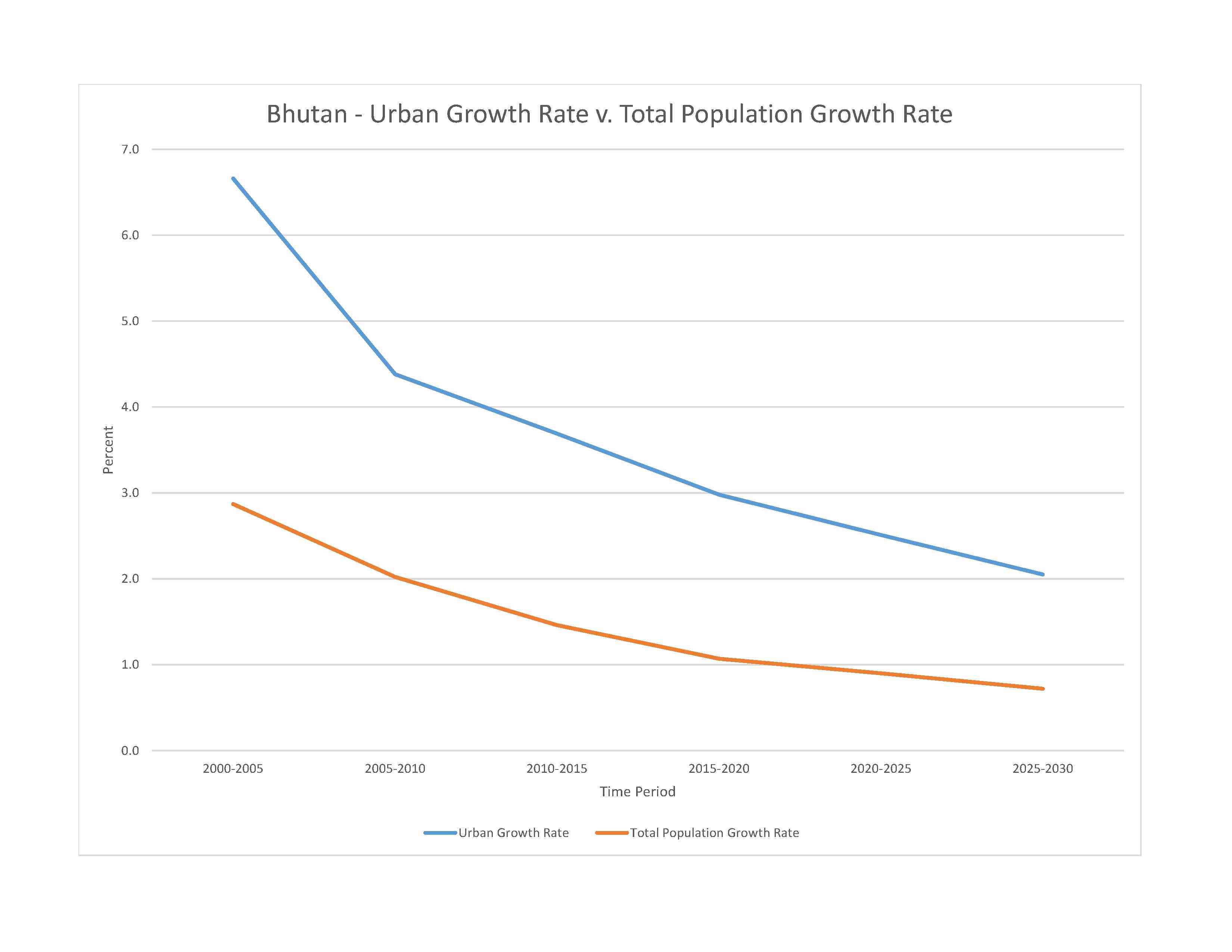
876,181 (2023 est.)
noun: Bhutanese (singular and plural)
adjective: Bhutanese
Ngalop (also known as Bhote) 50%, ethnic Nepali 35% (predominantly Lhotshampas), indigenous or migrant tribes 15%
Sharchopkha 28%, Dzongkha (official) 24%, Lhotshamkha 22%, other 26% (includes foreign languages) (2005 est.)
Lamaistic Buddhist 75.3%, Indian- and Nepali-influenced Hinduism 22.1%, other 2.6% (2005 est.)
0-14 years: 23.49% (male 105,317/female 100,526)
15-64 years: 69.97% (male 318,732/female 294,292)
65 years and over: 6.54% (2023 est.) (male 29,582/female 27,732)
total dependency ratio: 40.7
youth dependency ratio: 32.1
elderly dependency ratio: 8.6
potential support ratio: 11.1 (2021 est.)
total: 30.2 years (2023 est.)
male: 30.6 years
female: 29.8 years
0.96% (2023 est.)
15.6 births/1,000 population (2023 est.)
6.1 deaths/1,000 population (2023 est.)
0 migrant(s)/1,000 population (2023 est.)
urban population: 44.4% of total population (2023)
rate of urbanization: 2.52% annual rate of change (2020-25 est.)

203,000 THIMPHU (capital) (2018)
at birth: 1.05 male(s)/female
0-14 years: 1.05 male(s)/female
15-64 years: 1.08 male(s)/female
65 years and over: 1.07 male(s)/female
total population: 1.07 male(s)/female (2023 est.)
60 deaths/100,000 live births (2020 est.)
total: 25.6 deaths/1,000 live births (2023 est.)
male: 25.9 deaths/1,000 live births
female: 25.3 deaths/1,000 live births
total population: 73 years (2023 est.)
male: 71.8 years
female: 74.3 years
1.77 children born/woman (2023 est.)
0.86 (2023 est.)
N/A
improved: urban: 99.5% of population
rural: 100% of population
total: 99.8% of population
unimproved: urban: 0.5% of population
rural: 0% of population
total: 0.2% of population (2020 est.)
4.4% of GDP (2020)
0.5 physicians/1,000 population (2020)
1.7 beds/1,000 population (2012)
improved: urban: 90.8% of population
rural: 83.1% of population
total: 86.4% of population
unimproved: urban: 9.2% of population
rural: 16.9% of population
total: 13.6% of population (2020 est.)
6.4% (2016)
total: 0.07 liters of pure alcohol (2019 est.)
beer: 0.01 liters of pure alcohol (2019 est.)
wine: 0.05 liters of pure alcohol (2019 est.)
spirits: 0 liters of pure alcohol (2019 est.)
other alcohols: 0 liters of pure alcohol (2019 est.)
N/A
62.8% (2023 est.)
7% of GDP (2021 est.)
definition: age 15 and over can read and write
total population: 70.9%
male: 77.9%
female: 62.8% (2021)
total: 13 years
male: 13 years
female: 13 years (2018)
NOTE: The information regarding Bhutan on this page is re-published from the 2024 World Fact Book of the United States Central Intelligence Agency and other sources. No claims are made regarding the accuracy of Bhutan 2024 information contained here. All suggestions for corrections of any errors about Bhutan 2024 should be addressed to the CIA or the source cited on each page.
This page was last modified 04 May 24, Copyright © 2024 ITA all rights reserved.